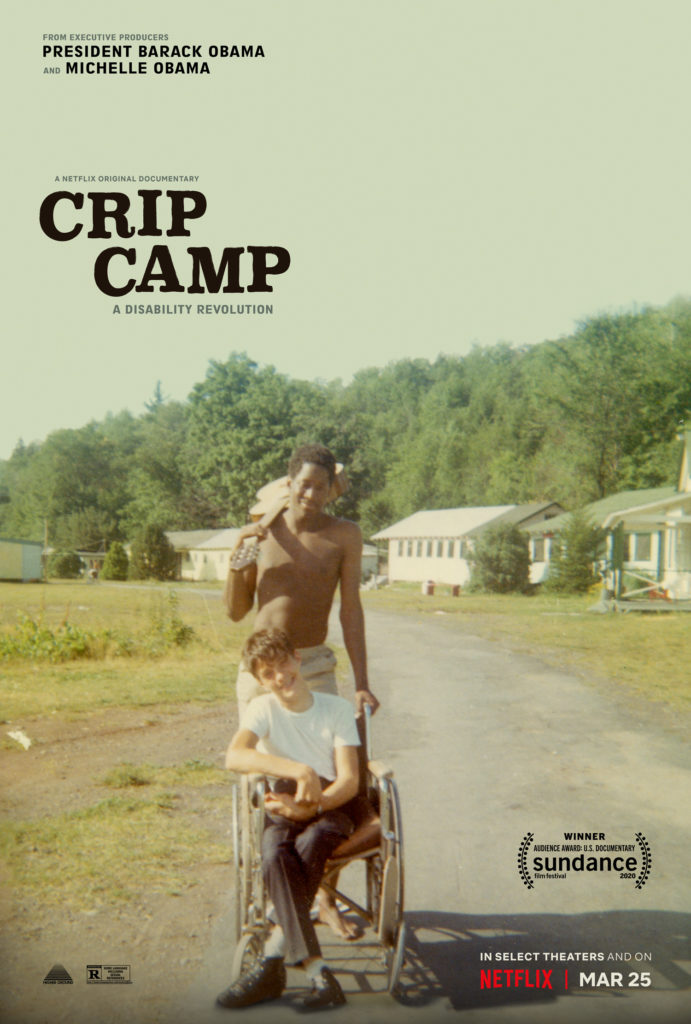The history of the struggle to secure rights for people with disabilities is a facet of the civil rights movement that is not well known. Fortunately, there is now an extraordinary, humanizing, inspirational film on Netflix that tells a crucial part of that story.
The new Netflix documentary Crip Camp: A Disability Revolution tells the story of extraordinary individuals who paved the way for five decades of advocacy for disability rights. Before the Rehabilitation Act of 1973, few protections existed for individuals with disabilities. Employment and education discrimination was commonplace, as was the lack of access to basic services such as public transportation. Social stigma led to widespread institutionalization and isolation.
 Crip Camp begins with a group of teens who spend summers at a camp near Woodstock, NY in the early 1970s. It is a camp for kids with a range of disabilities—the kids call it “Crip Camp”—but as the film makes clear, the experiences they have there are what teens experience at camps everywhere. They make friends, flirt, goof around, and enjoy each other. Because of their disabilities, these kids are usually marginalized in their everyday lives—treated as something “other” and stigmatized. Camp Jened is a reprieve from that.
Crip Camp begins with a group of teens who spend summers at a camp near Woodstock, NY in the early 1970s. It is a camp for kids with a range of disabilities—the kids call it “Crip Camp”—but as the film makes clear, the experiences they have there are what teens experience at camps everywhere. They make friends, flirt, goof around, and enjoy each other. Because of their disabilities, these kids are usually marginalized in their everyday lives—treated as something “other” and stigmatized. Camp Jened is a reprieve from that.
Some of the campers used handheld movie cameras to capture some of their experiences. We soon meet a cast of characters and learn their stories. A young woman named Judy Heumann stands out as a born leader (she later helped oversee the U.S. Department of Education’s special education work) and who brings the spirit of Camp Jened with her into the broader world once the summers end.
As a young adult, Heumann becomes the leader of a group of activists working in pursuit of equal rights for people with disabilities. Many of her fellow campers join her. They form the grassroots civil rights campaign that led to the passage of Section 504, the landmark federal law ensuring rights for people with disabilities. Heumann proves to be the powerful advocate needed to break through the barriers of an apathetic, reluctant bureaucracy.
We watch Heumann and her friends from camp as they protest and speak out, refusing to be ignored. They demand the right to access public buildings, leading to one of the film’s most powerful moments, the famous 1990 Capitol Crawl demonstration. It is mesmerizing and painful to watch activists with disabilities leave their wheelchairs and pull themselves up the Capitol steps, physically demonstrating the obstacles they face every day, in front of onlookers and news cameras. Their commitment is rewarded by the passage of Section 504 of the Rehabilitation Act of 1973, the first federal law ensuring rights for people with disabilities.
While disability rights have come a long way since the ’70s, there are many steps yet to climb. Discrimination and obstacles in education and employment persist. Children with disabilities are disproportionately likely to face harsh disciplinary practices and have high school dropout rates up to four times higher than their peers without disabilities. The picture remains bleak after graduation. The unemployment rate for people with disabilities is more than double the national average, and the unemployment gap persists across all levels of educational attainment.
These unacceptable statistics show that our society is failing people with disabilities. But we can’t leave this fight to Judy Heumann and her fellow activists alone, remarkable as they are. Crip Camp is uplifting and depressing at the same time. By highlighting an underappreciated piece of our collective history, it shows us both how far we’ve come and how far we have yet to go. Let’s get the word out. Watch this film, share it with others, and advocate for the civil rights of people with disabilities.
Comments are closed.